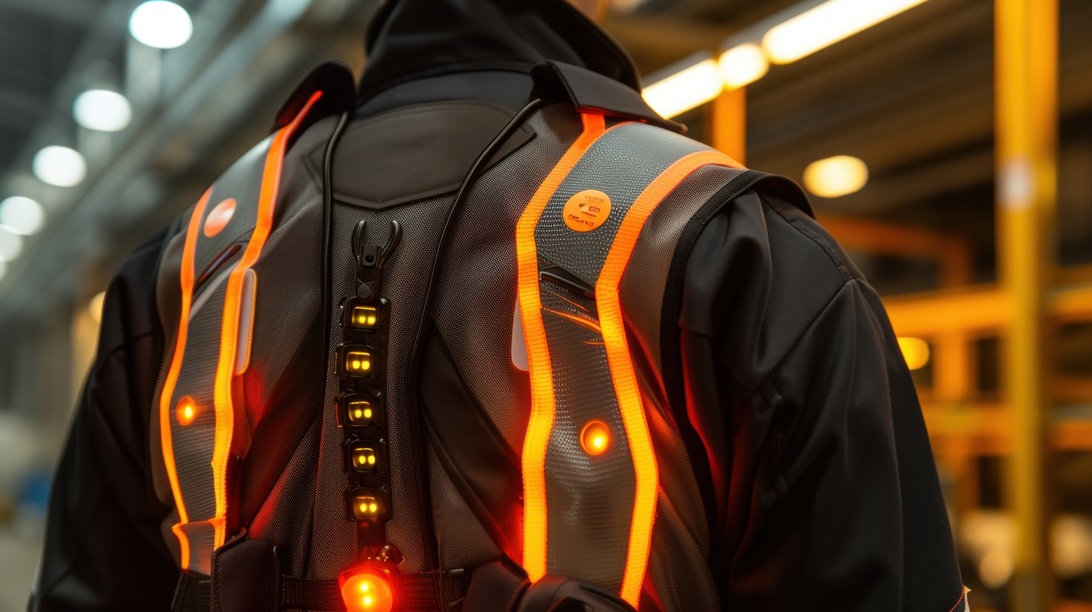The manufacturing industry has always had its fair share of safety risks—heavy machinery, moving parts, exposure to hazardous materials, and physically demanding work environments. But with the rise of the Internet of Things (IoT), a new era of safety is being ushered in—one where real-time data and connected devices are helping keep workers safer than ever before.
Here’s how IoT is transforming workplace safety on the manufacturing floor.
What Is IoT in Manufacturing?
The Internet of Things (IoT) refers to physical devices—like sensors, machines, and wearables—that are connected to the internet and can collect, send, and receive data. In a manufacturing setting, this means everything from equipment on the factory floor to the gear workers wear can be part of an intelligent, responsive safety ecosystem.
1. Real-Time Hazard Detection
In a manufacturing plant, things can go wrong in seconds. Machines overheat, chemicals leak, or workers find themselves in unsafe positions. IoT sensors can monitor environmental conditions like:
- Temperature spikes
- Air quality and gas leaks
- Vibration or noise levels
- Equipment malfunctions
When thresholds are breached, alerts are automatically sent to supervisors or even emergency response systems—giving teams precious time to respond before accidents occur.
2. Smart Wearables for Worker Safety
IoT-powered wearables like smart helmets, vests, watches or wristbands are becoming standard in high-risk manufacturing environments. These devices can:
- Track a worker’s location on the floor (useful in emergencies)
- Monitor heart rate, body temperature, or signs of fatigue
- Detect falls, abnormal movement, or prolonged inactivity
If a worker collapses, enters a restricted area, or shows signs of heat exhaustion, the system can send an instant alert and trigger safety protocols—without waiting for someone to notice.
3. Predictive Maintenance to Prevent Accidents
Unplanned machinery failure is one of the top causes of injuries and downtime in manufacturing. With IoT sensors continuously collecting performance data (like motor temperature, vibrations, and usage hours), maintenance teams can:
- Spot wear and tear before it becomes dangerous
- Schedule proactive repairs
- Prevent breakdowns that could cause harm or halt production
This predictive maintenance model not only keeps machines running smoothly but also protects the workers operating them.
4. Automated Emergency Response
IoT systems can be connected to automated safety features. For example:
- Fire detection sensors can trigger ventilation systems and alert nearby workers
- Smart lighting can guide employees to the nearest exit in case of evacuation
- Automated shutdowns can stop machines if an operator is in danger
Instead of relying on human reaction time, these systems act instantly to reduce harm.
5. Data-Driven Safety Improvements
Every connected device is gathering data that can be analyzed to improve future safety protocols. Over time, this helps safety managers:
- Identify high-risk areas or repeated hazards
- Evaluate the effectiveness of safety training
- Customize safety procedures based on real-world behavior
This shift from reactive to data-driven safety strategies is one of the most impactful changes IoT brings to manufacturing.
6. Easier Compliance and Reporting
Regulations in manufacturing can be strict—and for good reason. IoT simplifies compliance by automating record-keeping and creating digital audit trails. With real-time dashboards and detailed logs of environmental conditions, equipment status, and incident reports, companies can:
- Stay compliant with OSHA and industry standards
- Prove due diligence during inspections
- Respond faster and more accurately to incidents
Final Thoughts
The integration of IoT into manufacturing isn’t just a high-tech upgrade—it’s a major step forward in protecting workers and preventing accidents. By combining smart sensors, real-time alerts, predictive analytics, and automation, manufacturers can create safer, more responsive work environments.
In an industry where one mistake can have serious consequences, IoT doesn’t just enhance safety—it empowers it.
Safer factories. Smarter systems. Fewer accidents. That’s the IoT promise.
IMEC Technologies provides Safety Management Software to increase worker safety and aid compliance. IMEC’s Safety Management Software will manage inspections and audits, provides hazard identification, incident reporting, management of corrective and preventative actions from generation to closure. IMEC provides lock out tag out software solutions that will allow users to create lockout tagout procedures using an intuitive Mobile App and Manage Lockout Tagout Procedures, also the Review and Execution of those Lockout Tagout Procedures using the Mobile App. Annual Lockout Tagout Procedures audits are conducted using a Mobile App. The Mobile Inspection App allow users to perform inspections and audits, for example the system can be used as a Fire Extinguisher Barcode Inspection Software system to manage monthly fire extinguisher inspections and general fire safety inspections and also to record safety observations and manage corrective actions, anywhere and anytime. The solution can be used as a fire extinguisher barcode inspection software system or life safety inspection system to aid compliance in Higher Education, Healthcare, Industrial and Commercial Organizations. Benefits from a Fire Extinguisher Barcode System include the elimination of paperwork and reducing the burden of compliance with regulations such as NFPA, The Joint Commission. The Incident Reporting App allows users to easily and quickly report incidents, hazards and near-misses, these are then sent to the appropriate people for action and are managed to closure. Web Apps provide features such as, setup, management, scheduling tools, analysis, reporting and dashboards etc with the ability to report incidents to government bodies such as OSHA and RIDDOR. HazMat T&T is a hazardous waste management software solution designed for Environmental Service Companies and companies who generate a large quantity of hazardous waste. The solution tracks hazardous waste from cradle to grave aiding compliance, providing accurate waste inventory, increasing waste handling efficiency, reducing risk and also helps manage waste costs. HazMat T&T Hazardous Waste Management Software can be deployed in a number of deployment scenarios, from Large Hazardous Waste Generators, tracking their hazardous waste at their site to Environmental Service and Waste Management Companies using it track and manage hazardous waste at transfer and disposal sites. For more information visit our website www.imectechnologies.com

